An Eye on Produce Safety at Olivia's Garden
Elizabeth Lobozzo manages the ½ acre, year round, hydroponic greenhouse called Olivia’s Garden at Pineland Farms in New Gloucester, Maine. Chris Callahan with UVM Extension and the Northeast Center to Advance Food Safety (NECAFS) visited to learn what produce safety looks like in a hydroponic greenhouse farm.
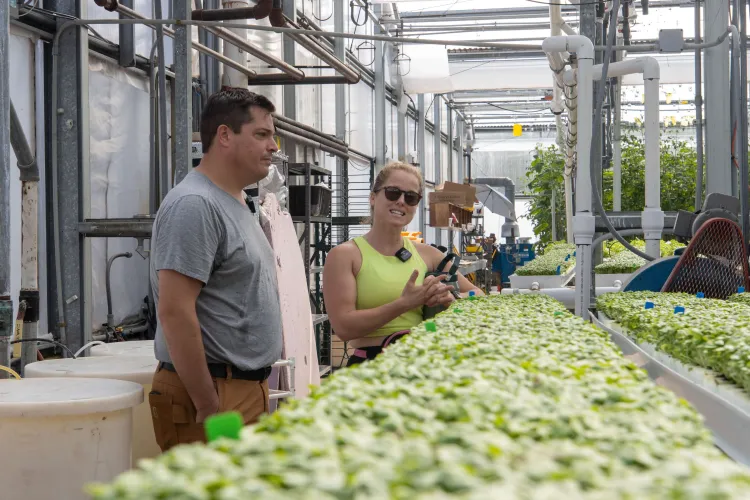
What started out as a summer job turned into a career for Elizabeth after going to college for communications. She quickly learned she enjoyed the physical job of working in the sunshine, year-round, and supporting the community with local food.
Scott Howard started Olivia’s in 1997 out of a barn growing tomatoes, and soon partnered with Pineland Farms to work out of the greenhouse. This opened the opportunity to expand offerings to include bib lettuce and basil which helped to diversify their products when other large players like Backyard Farms came into the market. Basil now is grown in over half the greenhouse and is highly profitable due to its quick turn over. Lettuce and pea shoots have similar benefits of quick crops for continuous cash flow.
“I'm in hydroponics because it's year-round, and year-round we can provide food for the community." - Elizabeth Lobozzo, Manager of Olivia’s Garden
Watch the Video from the Visit
Systems and Technology
Within the greenhouse they use a few different hydroponic systems:
- Nursery ponds - Deep water culture with rafts for germination (seed starting)
- Nutrient film technique (NFT) gutter system for grow-out (basil, lettuce)
- Nutrient film technique (NFT) gutter system with floating rafts (pea shoots)
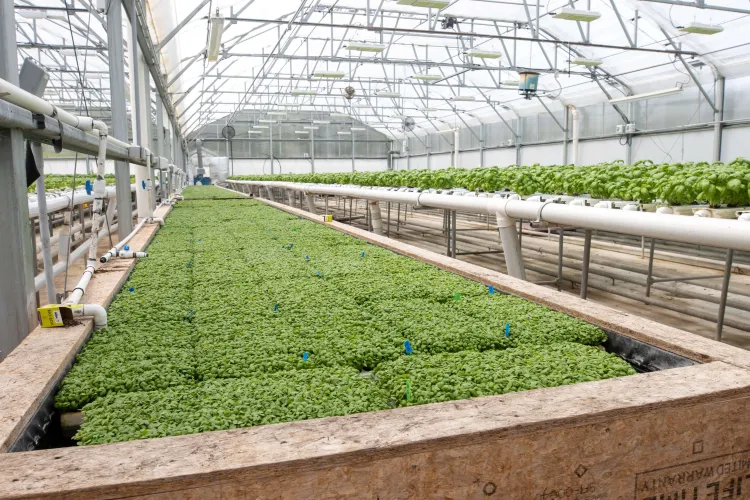
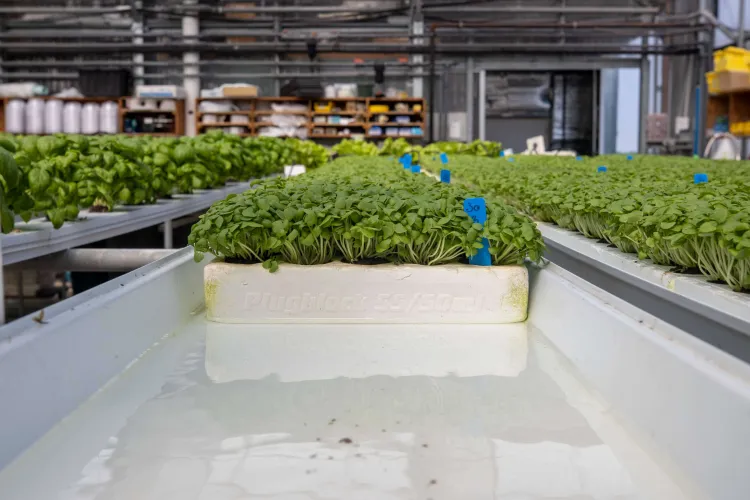
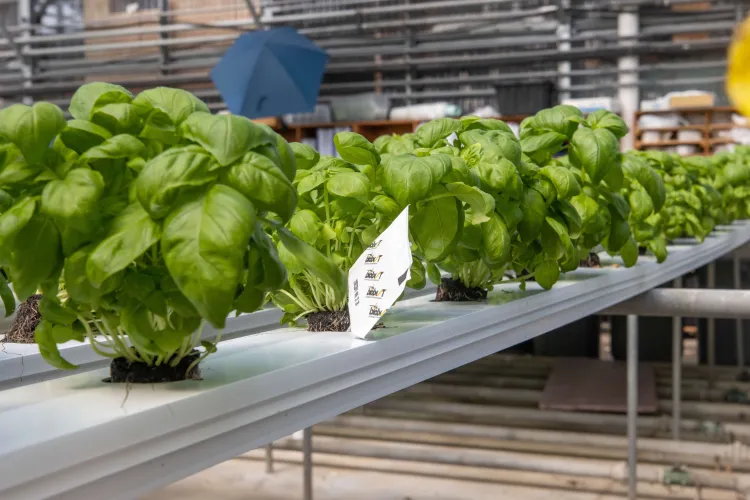
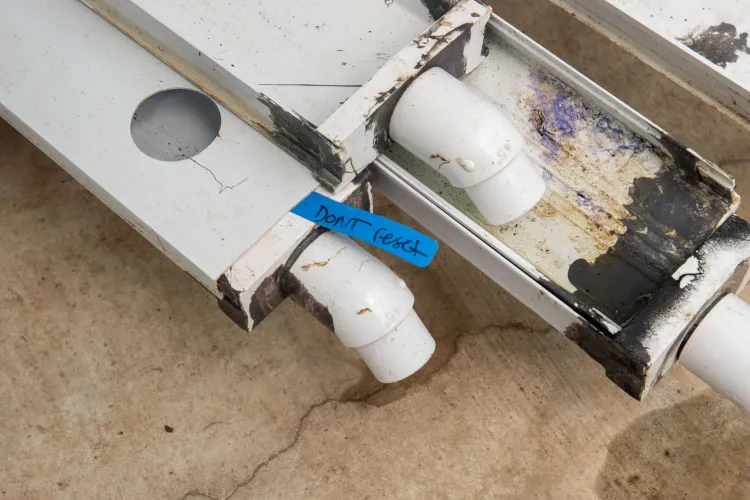

These gutter systems were purchased from Crop King, and surrounding infrastructure was built by other employees. Overall cleaning is not too burdensome, however the connections on the ends of the gutters could be manufactured with improved hygienic design. They aren't that durable and require the grower to glue the end caps on. Elizabeth thinks there is a lot of room for innovation in hygienic design of greenhouses and production system components.
The recirculated water gets replaced every three months via a major dump to bring fresh water into the system. This helps to balance the pH. The water is sourced from a municipal supply and is treated via reverse osmosis, nutrient additions, and nitric acid additions to control pH.
Additional Risk Reduction Measures
- The Greenhouse is screened to keep thrips from coming in.
- Shatterproof light fixtures help reduce physical contamination
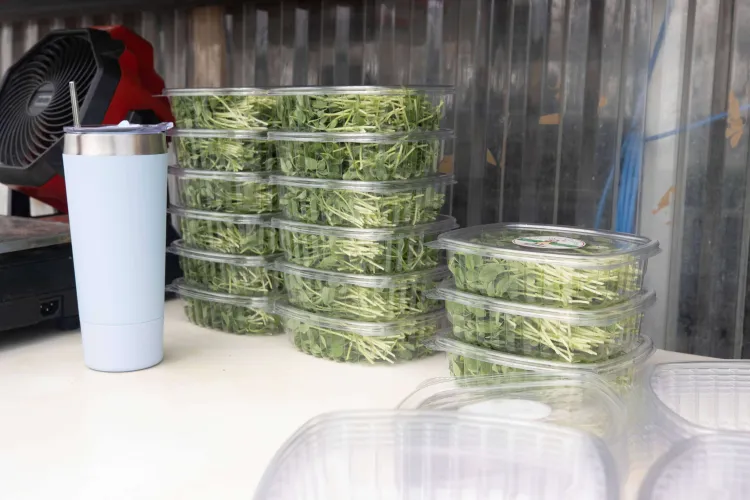
Harvest Practices
The produce gets harvested directly into single use packaging and does not require washing which is both efficient and minimizes cross-contamination risk with other produce. Typically harvest for basil and lettuce equates to placing one plant at a time into a plastic sleeve, while pea shoots are cut by hand and packed into plastic clamshells.
Harvest procedure for basil and lettuce:
- Start with a pre-harvest assessment
a. Check for signs of animals (droppings)
b. Clean area thoroughly - Turn off the water so things can dry out for ~10 minutes
- Lift the entire plant up out of the gutter, and place it into a bag
- Place bagged plant in the case
On the consumer packaging there are Instructions to keep roots moist and keep the plants upright.
Roots remain intact and wet, but not dripping.
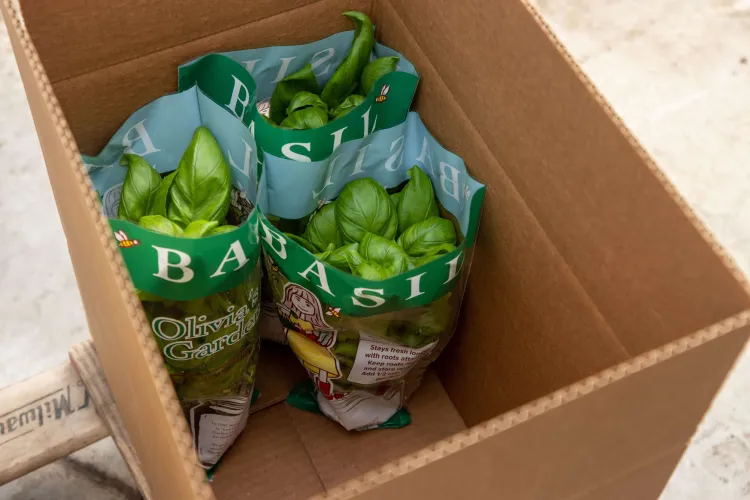
Produce Safety Cultural Practices
- Preharvest assessment for pest pressure, including animal poop
- If poop or other animal signs are observed, establish a buffer zone of plants that may have been affected and must not be harvested. Quarantine and clean the affected area thoroughly, being careful not to contaminate growing produce through the cleaning process. - Everyone is required to wash hands before handling produce. Gloves can be used, according to the employee’s preference.
- If using fake fingernails, gloves are required. - Sick Policy - People wear a mask if feeling ill or don't come to work.
- No touching your face, and then the produce.
- No cross contamination of cleaning solutions with growing water or produce
- Everyone is sensitive to dripping water from the greenhouse structure or from hydroponic system components.
- SOPs are maintained for cleaning procedures and sanitizing practices for totes, scissors, work spaces, etc.
- Cleaning procedures:
- Fill a 5 gallon bucket with soapy water
- Soak the growing trays (“gullies”) and scrub them clean using a sponge.
- Every packing station gets cleaned and then sanitized with bleach daily
- Single use paper towels for drying hands, etc.
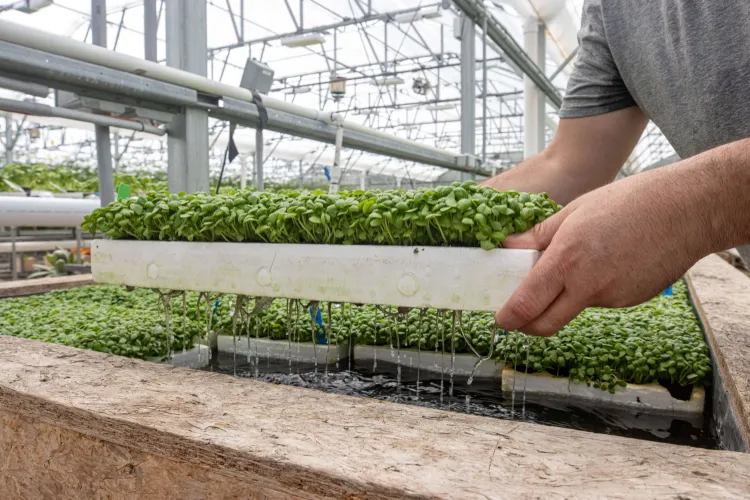
Foam rafts don’t get moved around very frequently, but when they are moved employees use caution to avoid dripping of the water on to the plants.
Elizabeth reflected that she attended a PSA training, however not much of it was applicable to her being an indoor grower. Specific areas of confusion were around ag water in hydroponic situations. She is in a few Facebook groups to learn from her peers, but not part of any trade organizations. Elizabeth reflects that there aren’t “a whole lot of resources for education towards hydroponic production” or many areas where she can ask peers questions about systems and practices.
“I think that [the future of hydroponics] is just going to keep expanding.”
Other Produce Safety Considerations
One example of an infrastructure upgrade identified during the visit was that they could install bird netting over the vents on their greenhouse. Birds aren't typically a problem, but occasionally one finds its way in and poses a risk.
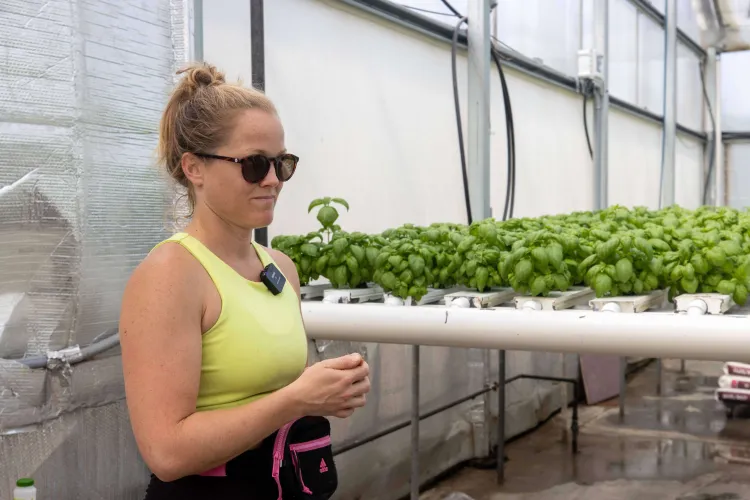
Question: Should I be using Zerotol to control algae and then fungus gnats?
Answer: A biological water treatment may be more effective at reducing fungus gnats than an antimicrobial product like Zerotol. For example, Legacy Greens uses a product that employs a specific type of bacteria (Bacillus thuringiensis subspecies israelensis or BTI) that interrupts the life cycle of mosquitos and fungus gnats.
Advice to your younger self: “Think about how to work smarter and maximize your energy and your people; and reach out to resources like the University of Maine particularly around beneficial insects, pests, and diseases.”
Share This Post
For more information on produce safety in hydroponics visit: